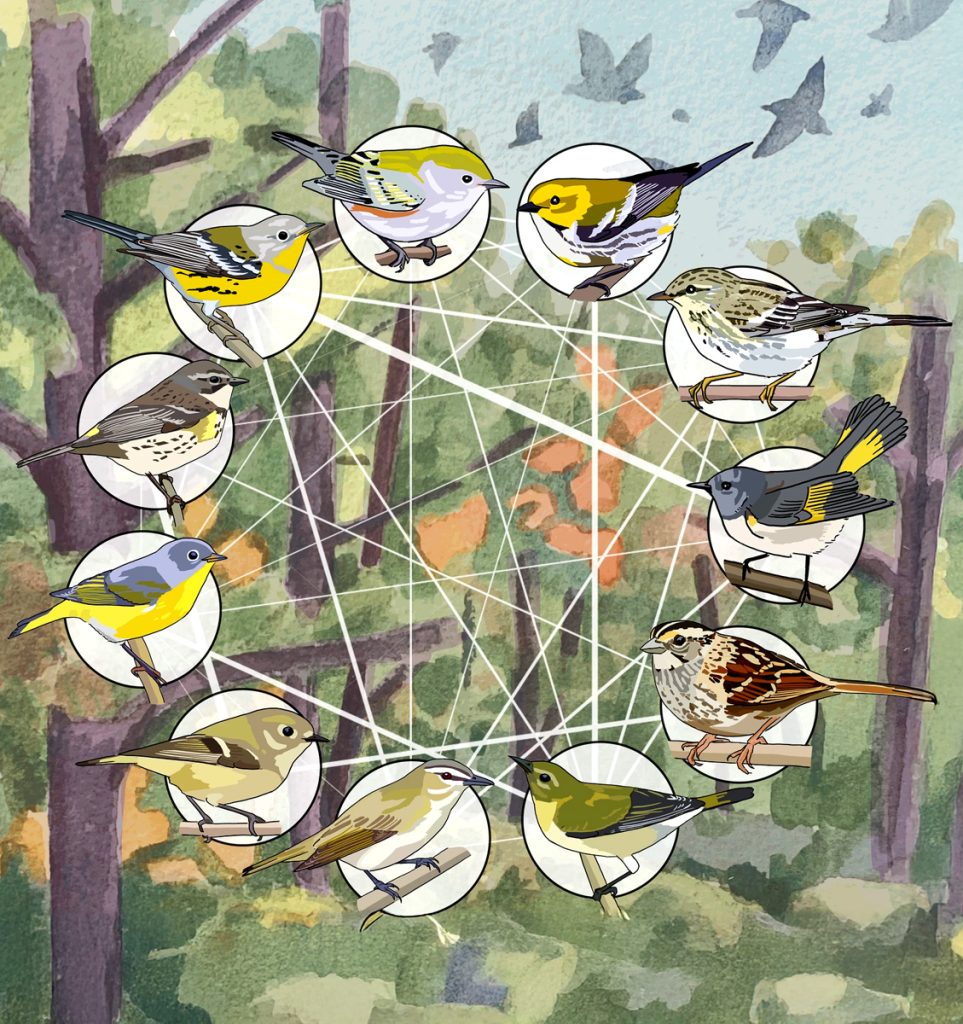
A pair of recent studies has shed light on the complex world of avian communication, and adds further support to the argument that there is more to birds than meets the eye when it comes to intelligence and culture.
The first study, published in The Royal Society for the Protection of Birds, and done in tandem with our own New Mexico State University and University of Pittsburgh at Johnstown, investigated the dialect of the Costa Rican native, the Yellow-naped Amazon Parrot, over a period of 22 years. The team began in 1994 by identifying three distinct “contact” calls—a type of call used across different animal species, primarily used to inform a nearby listener of the caller’s location. They found unique calls in the north, south and at the Nicaraguan border.
For the next 11 years, these calls remained unchanged and the regional boundaries were the same. But in 2016, the boundaries of the north and south calls shifted, and new call variants appeared in the south. Some birds were even calling in both northern and southern dialects. The cause of this was a rapid decrease in their habitat due to agriculture practices, leading to the parrot being marked “critically endangered” by the International Union for Conservation of Nature. The abstract for the study states, “These results suggest cultural traditions such as dialects may change in response to demographic and environmental conditions, with broad implications for threatened species.”
You don’t have to look far for a human parallel: New Mexico has two official state languages, Spanish and English, the result of centuries of changing cultures and state boundaries. The authors of this parrot study stress the importance of further research on the relationship between learned vocalizations and demographic disruption, but the findings are clear—birds of the same species can form unique regional dialects, and they can then learn new dialects as intermingling increases!
The next study comes courtesy of University of Maryland Center for Environmental Science and relates to interspecies relationships during migration. Previously, scientists believed that different species of birds sharing a space or flight path was mere coincidence, but this research suggests birds form interspecies communities as they migrate.
Researchers used the data collected from bird-banding stations, sites where scientists capture birds in mist nets, quickly record their information (size, age, species, sex) on an identification band, and release them back into the wild. Five stations across the country gave over 500,000 data records, corresponding to 50 bird species. Researchers began by noting when two different species were captured in the same net, and then accounted for factors like similar habitats and migration routes that would lead to chance encounters. If the same interspecies pairing showed up more frequently than a random encounter would, intentional pairing among different species was considered to be the case.
The researchers didn’t record whether these were positive or negative interactions—just because a pairing showed up across multiple nets didn’t mean these birds were necessarily working together—they could be in competition with each other. However, author Joely DeSimone was surprised to find that some songbirds, like Nashville and Tennessee Warblers, would intentionally seek each other out and forage for food together. Migration is a dangerous endeavor. Birds need to refuel as quickly and eat as much as possible every time they land. If they’re willing to share these resources with birds of a different species, then that social relationship must be crucial to their survival.
In the abstract of the study, the authors stress that “while interspecies interactions could result in costly competition or beneficial information exchange, we find that relationships are largely positive, suggesting limited competitive exclusion at the scale of a banding station during migratory stopovers.” DeSimone is already planning on following up her pioneering study with another that will focus more closely on the nature of these interspecies interactions and how climate change is an influence.
More than showing birds have a capacity for social relationships across species lines, conservationists hope that studies like this will allow for a multi-species approach to conservation. Migrating songbirds make up 80 percent of the 3 billion birds lost since 1970. Jill Deppe, senior director of Audubon’s Migratory Bird Initiative, is encouraged by the study. “It gives me hope that we’re going to advance our conservation actions at a pace that’s warranted by the urgency of the declines we’ve seen. One species at a time just isn’t going to be fast enough to protect these species and bend that bird curve.”
Author
-

Bryce Flanagan moved from Sacramento, CA to Taos County in 2016, and has lived in Questa for two years. He's passionate about the unique and beautiful wildlife of our state and is a regular contributor to the Questa Del Rio News.
View all posts


